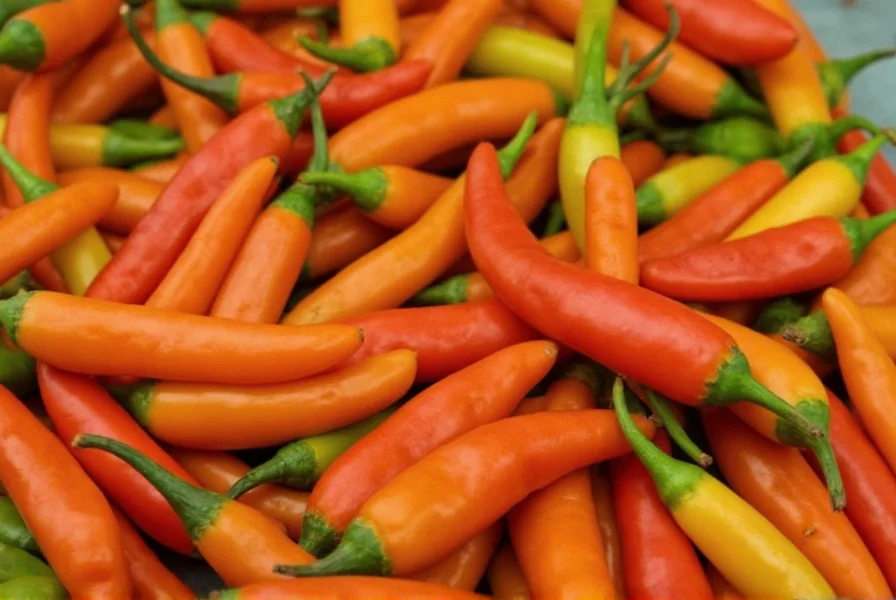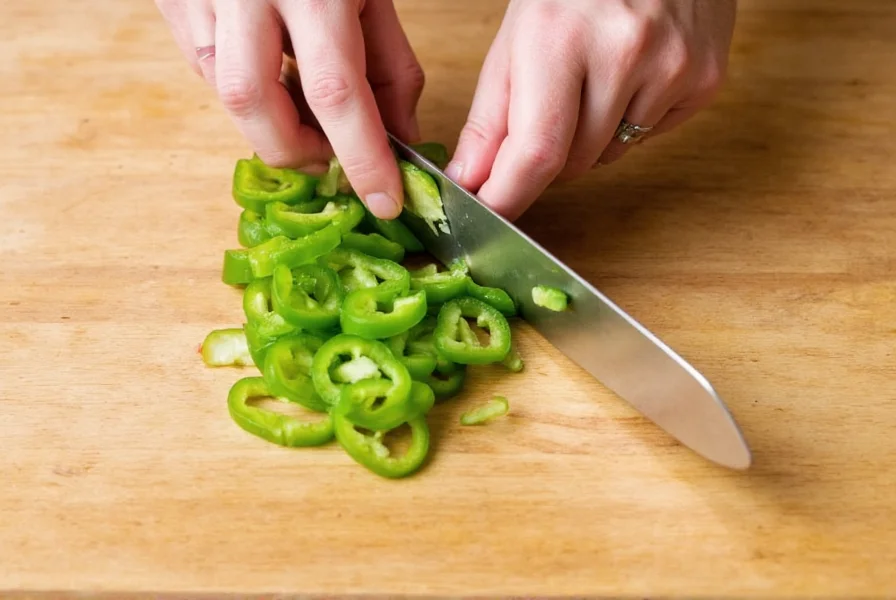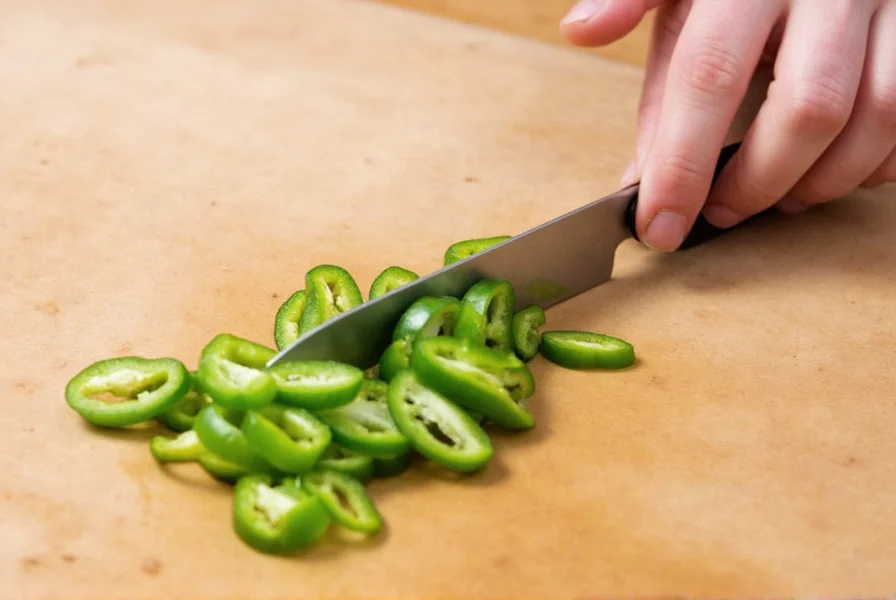Cutting serrano peppers properly is essential for controlling heat and ensuring safety in the kitchen. This step-by-step guide will show you exactly how to prepare serrano peppers for any recipe, from salsas to stir-fries, while avoiding burns and maximizing flavor.

Step-by-Step Guide to Cutting Serrano Peppers
- Wash and dry: Rinse peppers under cold water and pat dry with a clean towel.
- Wear protective gloves: Use nitrile or latex gloves to prevent capsaicin burns on your skin.
- Trim the stem: Slice off the top where the stem connects to the pepper.
- Remove seeds and membranes (optional): Slice lengthwise and scrape out seeds and white membranes for milder heat.
- Choose your cut:
- Mince: For salsas and sauces (finely chop)
- Dice: For soups and stews (small uniform pieces)
- Thin slices: For tacos and salads (straight across)

Essential Safety Tips
- Never touch your face: Capsaicin can cause severe eye irritation
- Use milk or yogurt: If you experience burning, apply dairy products (not water)
- Wash tools thoroughly: Clean cutting boards and knives immediately after use
| Tool | Purpose |
|---|---|
| Sharp chef's knife | Prevents slipping and ensures clean cuts |
| Non-slip cutting board | Stays in place during cutting |
| Nitrile gloves | Protects hands from capsaicin burns |

Storing Cut Serrano Peppers
- Refrigerator: Store in an airtight container for 3-5 days
- Freezer: Spread on a baking sheet, freeze solid, then transfer to a freezer bag for up to 6 months
Frequently Asked Questions
How do I prevent my hands from burning when cutting serrano peppers?
Always wear nitrile or latex gloves before handling serrano peppers. If you don't have gloves, use plastic wrap as a barrier between your fingers and the pepper. After handling, wash hands thoroughly with soap and water, and avoid touching your face. If burning occurs, apply milk or yogurt (not water) to the affected area.
Should I remove the seeds from serrano peppers?
Yes, if you want to reduce the heat level. The seeds and white membranes contain most of the capsaicin (the compound responsible for spiciness). For milder dishes, scrape them out completely. For maximum heat, leave them intact. Remember that heat levels can vary between individual peppers, so taste a small piece first if unsure.
How spicy are serrano peppers compared to jalapeños?
Serrano peppers typically measure 10,000-23,000 Scoville Heat Units (SHU), while jalapeños measure 2,500-8,000 SHU. This means serranos can be up to 9 times hotter than jalapeños. When substituting serranos for jalapeños in recipes, start with about half the amount and adjust to taste.











 浙公网安备
33010002000092号
浙公网安备
33010002000092号 浙B2-20120091-4
浙B2-20120091-4